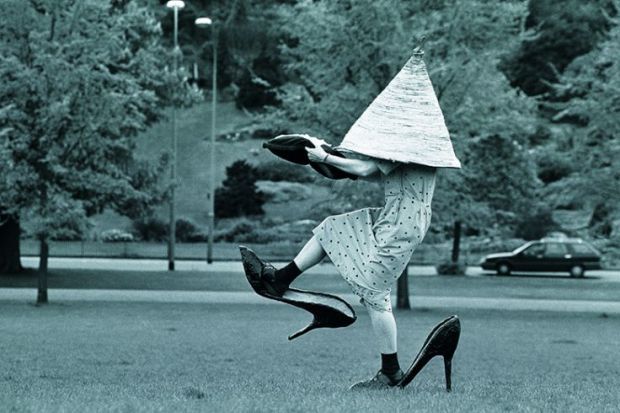I am sure that we have all been in situations where we have thought: “If only they had designed that differently to make it more child/female/height/age-friendly”. In Defined by Design, Kathryn Anthony focuses on those annoying everyday designs of workplaces, homes, shopping malls and packaging that can be infuriating, irritating, biased or downright dangerous. Unfortunately, however, the author has let her own prejudices get in the way of writing an interesting and thoughtful discussion of what such design issues mean for people, and she instead presents a list of so-called problems, some design oriented and many not, that lead to what is ultimately a disappointing read.
Too often the book feels like a teacher telling off wayward pupils, as in Anthony’s tirade against high heels and flip-flops. The ideal women’s shoe, she says, is one-half to three-quarters of an inch, square-toed with a roomy toe box to prevent scrunching. But a few pages later, she promotes a prototype design for adjustable heels that allow women to switch from five-inch heels to two-and-a-half-inch heels; the sensible square-toed, low-heeled advice now forgotten. Anomalies such as this abound: within one chapter she claims that women are wearing increasingly tight clothes, and a few pages later she reports that loose-fitting sweatpants are becoming more popular. Needless to say, both have design flaws.
I wondered if Anthony has ever talked to real human beings, as some of her solutions to design problems seem absurd. But she claims to have recorded the comments of hundreds of people and been shocked by what she found. She dislikes the fact that women’s trousers zip in the same way as men’s – but surely women have to pull their trousers down as well. The solution, apparently, is for women’s trousers to come with a zipper underneath the crotch. I could not but think that there might be some unintended consequences to the idea, as well as a complete lack of understanding of cultural and fashion norms. Indeed, Anthony’s book is short on any kind of historical or social context of the designs; time and again, I thought that a bit of research into how things got the way they have would have helped to make a more interesting narrative.
We are warned to be aware of our unconscious biases (although I am not entirely sure how one can be aware of something unconscious) and to recognise gender stereotyping. “Men are often relegated to the basement, garage and yard, while women rule the kitchen,” according to Anthony, with the result that men feel like outsiders, while women are disadvantaged if divorced or widowed. What…from not going into the garage? Surely it’s the men who haven’t learned to cook who are going to have a problem. There are just too many points such as this that the author finds problematic, but then fails to fully explore or develop a sound argument around, for this book to (as she claims) change my experience of the world. There is good design and bad design, and the subject deserves a deeper and more thoughtful exploration of both.
Isabelle Szmigin is professor of marketing, University of Birmingham.
Defined by Design: The Surprising Power of Hidden Gender, Age, and Body Bias in Everyday Products and Places
By Kathryn H. Anthony
Prometheus, 320pp, £15.99
ISBN 9781633882836
Published 14 March 2017
POSTSCRIPT:
Print headline: Zips, trousers, heels and toes
Register to continue
Why register?
- Registration is free and only takes a moment
- Once registered, you can read 3 articles a month
- Sign up for our newsletter
Subscribe
Or subscribe for unlimited access to:
- Unlimited access to news, views, insights & reviews
- Digital editions
- Digital access to THE’s university and college rankings analysis
Already registered or a current subscriber?




